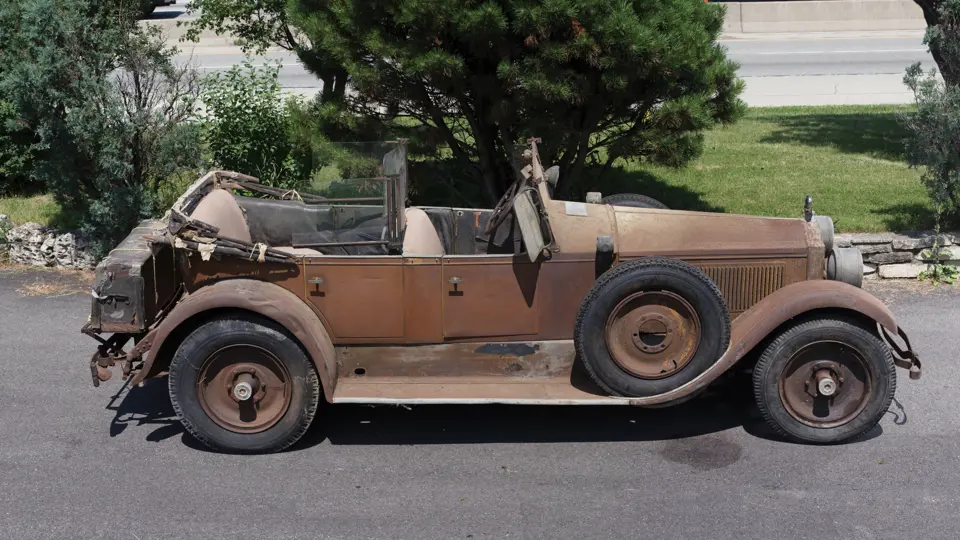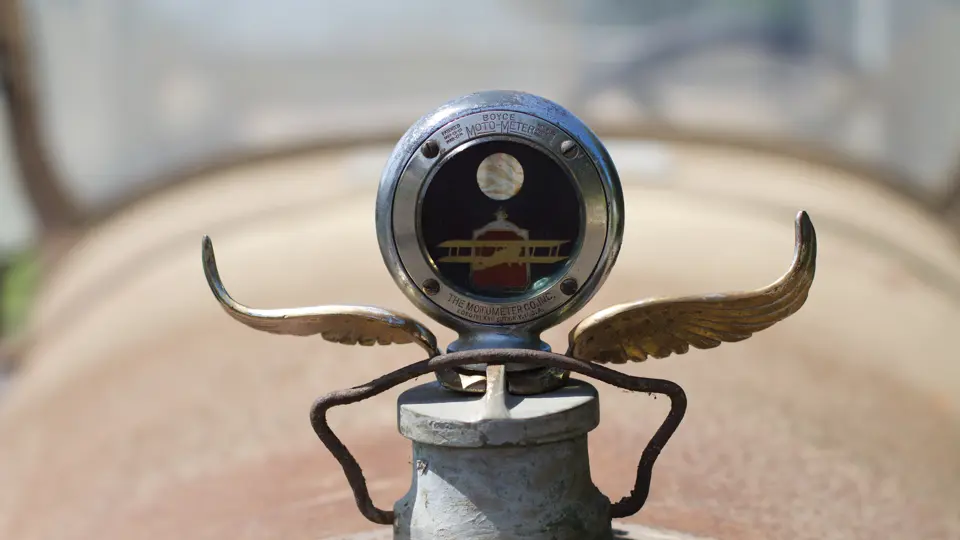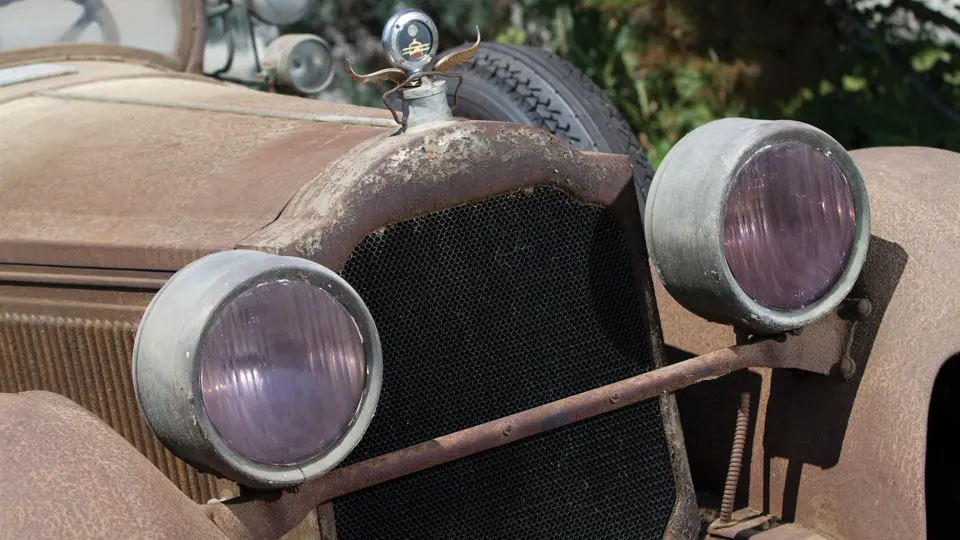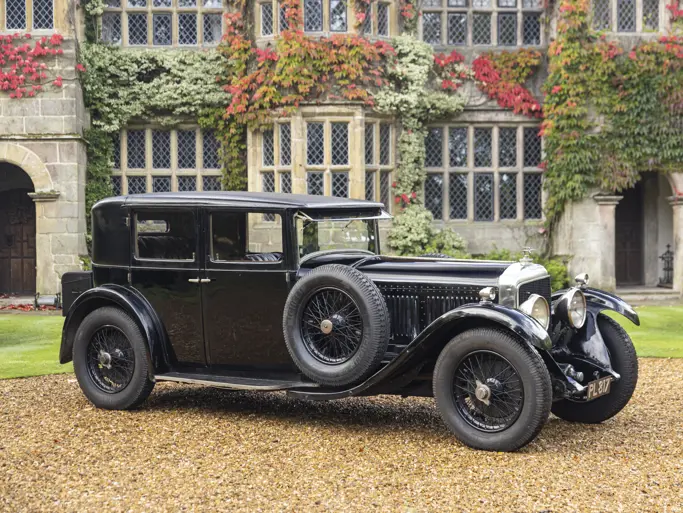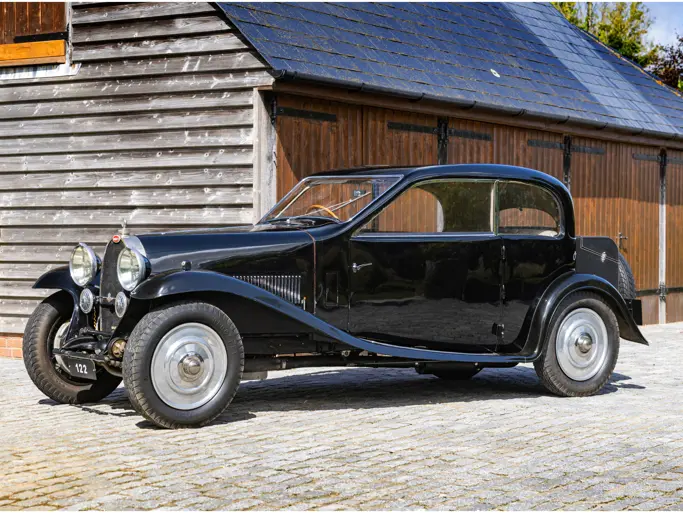
1926 Packard 236 Eight Sport by Pullman
{{lr.item.text}}
$35,750 USD | Sold
{{bidding.lot.reserveStatusFormatted}}
- Extraordinary barn find
- Offered from the collection of a lady
- Single-family ownership for 60 years
- Incredibly original and complete
- Featured in Cars and Parts and as a cover car and feature in the May/June 2013 issue of Antique Automobile
Series 236. Body Style 246. 85 bhp, 357.8 cu. in. L-head inline eight-cylinder engine, three-speed manual transmission, solid front and live rear axle with leaf springs, and four-wheel mechanical drum brakes. Wheelbase: 136 in.
Although known for its conservative clientele, Packard was always willing to offer a special little something, a “secret Packard” of sorts, for its buyers of a less conservative bent. The most famous of these were the 626 and 734 Speedster Eights of 1929 and 1930, respectively, but a few years prior, the company set the stage for those hot rods with the sport, a four-passenger open model on the 136-inch wheelbase Packard Eight chassis.
Bodied by Chicago’s Pullman Company, of railroad car fame, the sport was two inches lower and five inches narrower than standard Packard phaetons, with a radiator and hood line lowered to suit. The result was a hood that seemed to flow straight back through the body; this was Packard’s earliest use of the famed “false cowl” that would make its early 1930s models so attractive. All four doors on the Pullman body were hinged at the front, emphasizing that this was an “owner-driver” car for the sporty young rake who wanted more capacity for friends than a roadster could offer.
The sport was offered from 1922 through to 1926, meaning that the original owner of this car, who took delivery in Philadelphia in June 1926, snapped it up just in the nick of time. This Packard is one of three sport models known to survive today, and it was originally delivered with virtually every conceivable accessory, including side-mounted spares (as were rarely fitted in 1926), wind wings, a deluxe tonneau windshield for the rear seat, a spotlight, cowl lights, a trunk rack, and the front-mounted Biflex bumper.
The car was acquired in 1953 by the second owners in Virginia, and it remained in their care for nearly 60 years. While still with the family, it was found by a writer and was the subject of an article in Cars and Parts magazine in September 2003. The writer kept the location of the Sport protected from the many interested parties, with a level of secrecy usually assigned to nuclear launch codes.
Nonetheless, nearly 60 years after the family acquired the Packard, it was located by the present lady collector in much the same condition in which it is seen here: timeworn, certainly, but remarkably and astonishingly complete. The only missing parts were, and still are, a one-wheel lock ring and the spare tire caps and wing nuts. The car still has all of its original accessories that were installed in 1926, with most of the original glass still in the windshields, the gauges still in the dashboard, and all lights and bumpers still present. A winged Boyce MotoMeter was found and has been installed on the radiator cap. Under the hood, the original Skinner oil rectifier, a Fuelizer carburetor, and 20-inch wheels can still be found, and all of which would be almost impossible to duplicate today.
While it did not run when purchased, astonishingly, it did roll on its axles and the original tires held air, thanks to the tender loving care that the family had given their heirloom over the passing years. The lady collector states that she had planned to get the car running while leaving it in patinated condition, but she did not realize the scope of the work necessary, so she decided to pass the Packard on to a new caretaker at this sale.
This Sport was recently and prominently featured as the prestigious cover feature in the May/June 2013 issue of Antique Automobile magazine, and it is a remarkably complete, solid, and outstanding example of Packard’s “original speedster.”
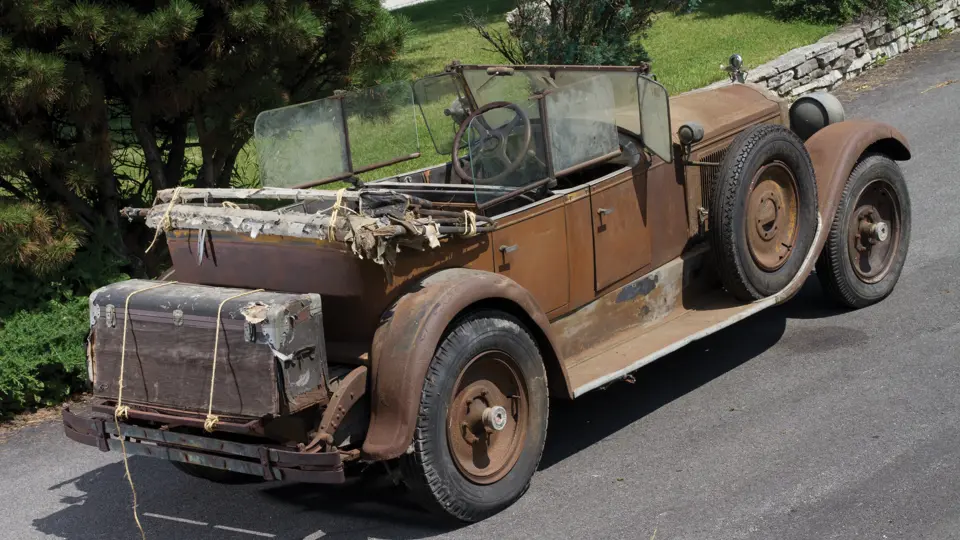
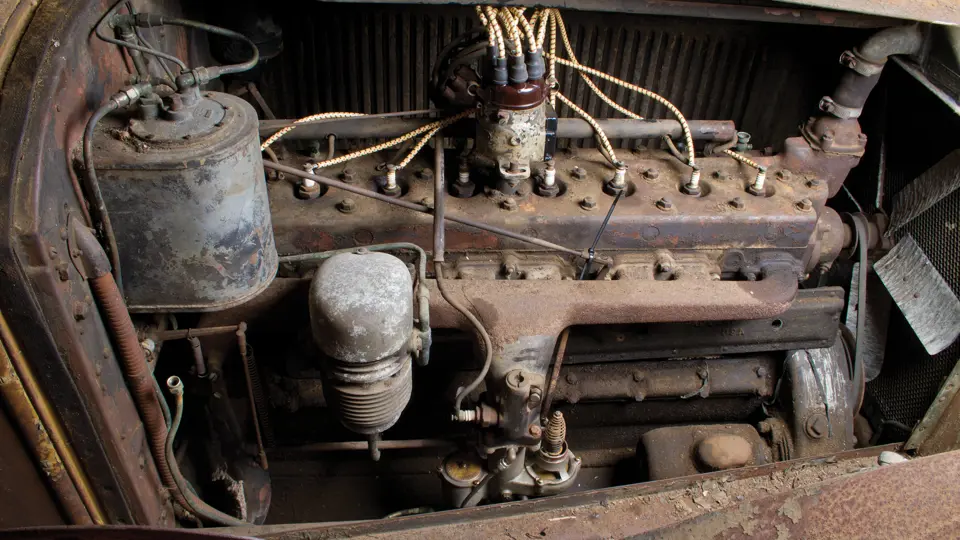


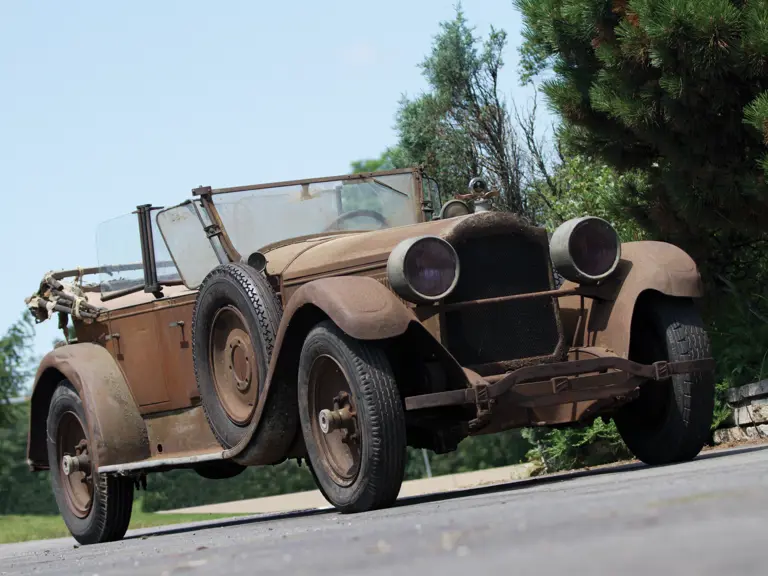
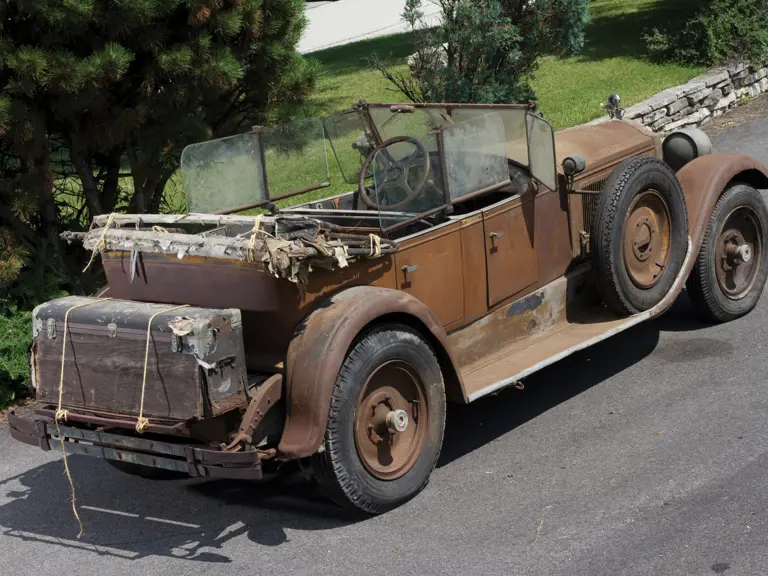

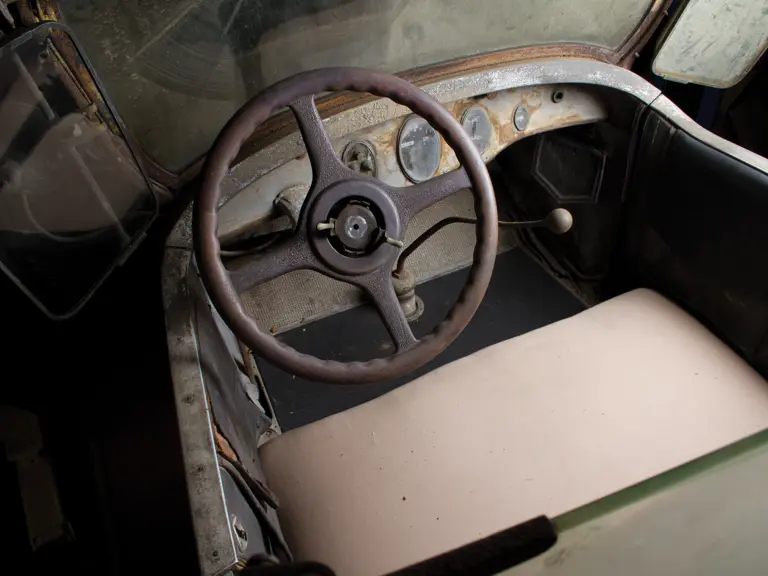
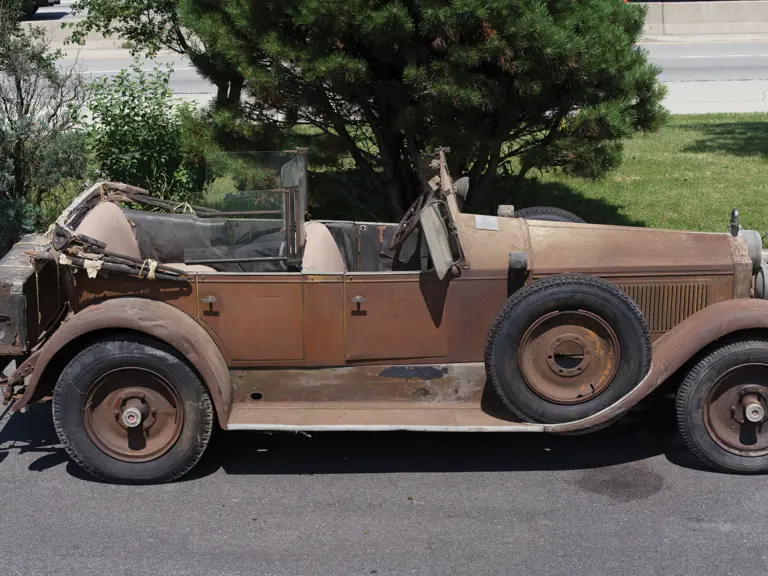

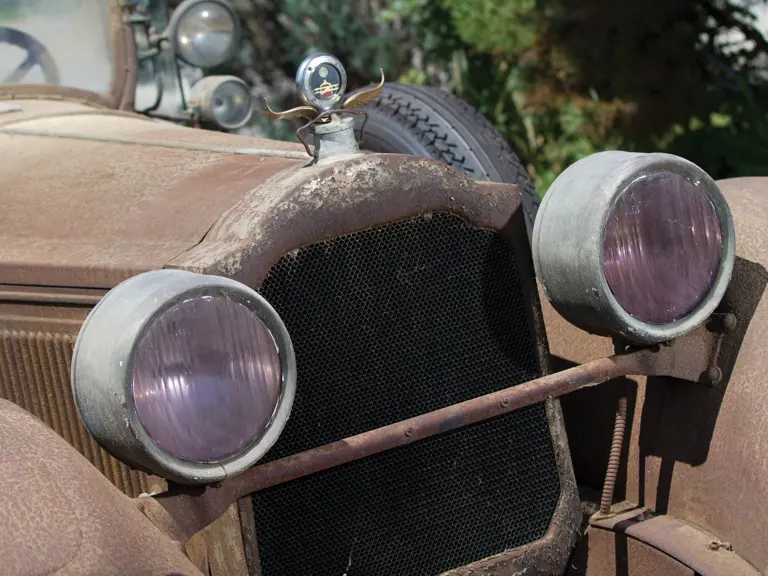

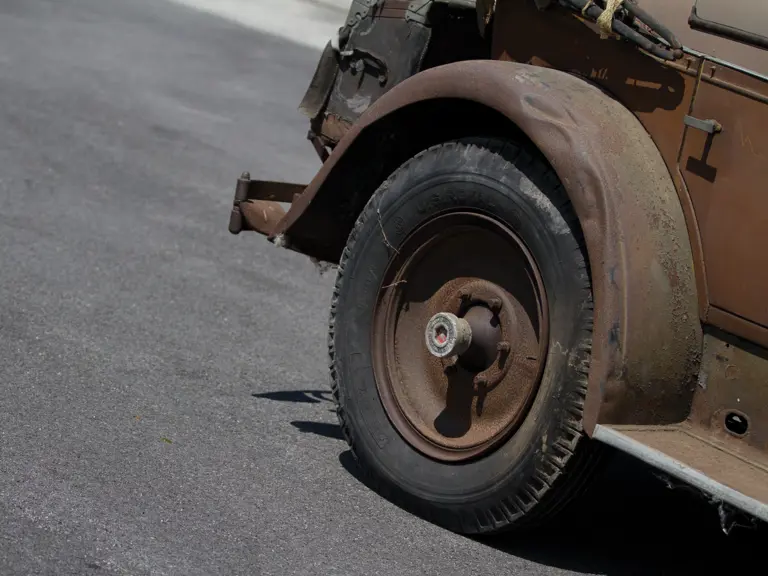
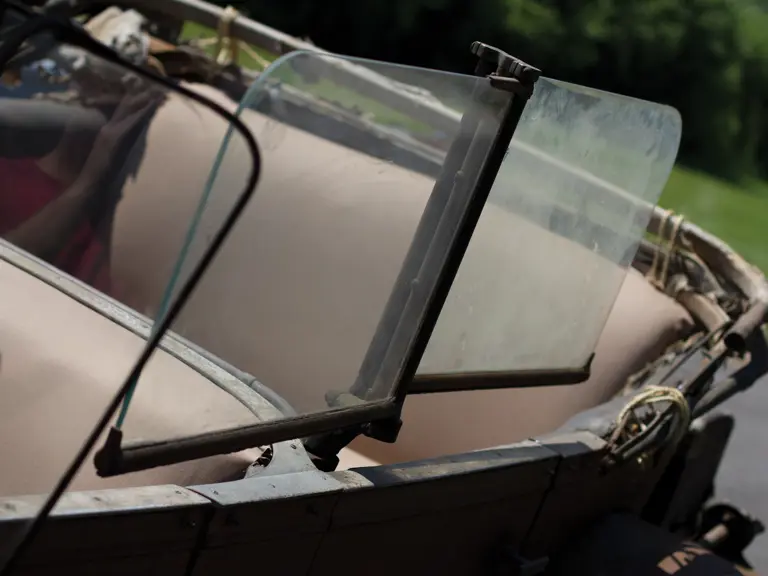
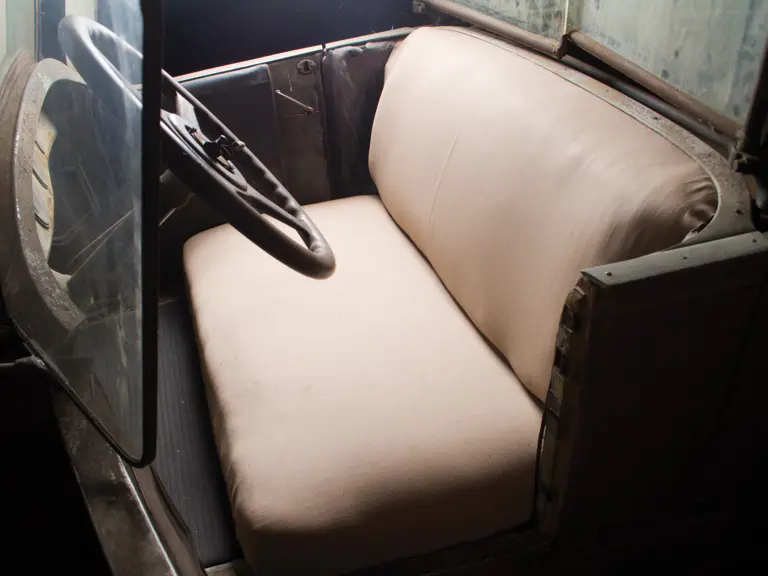
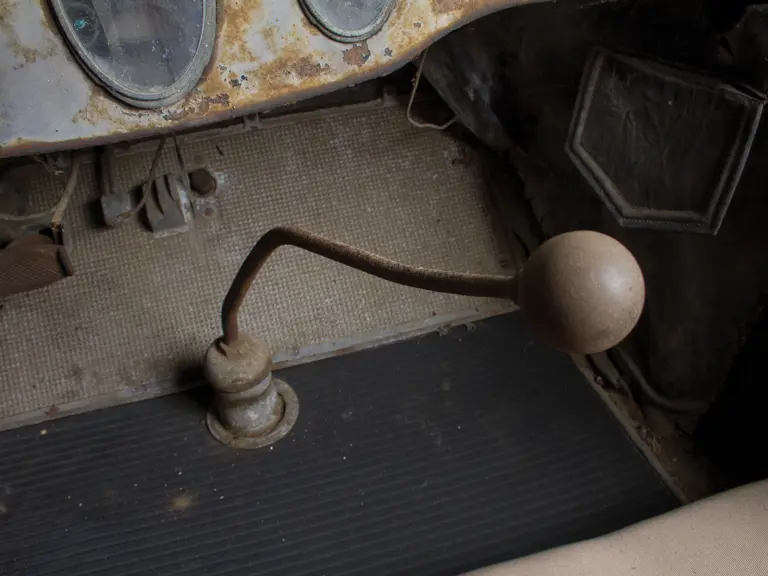
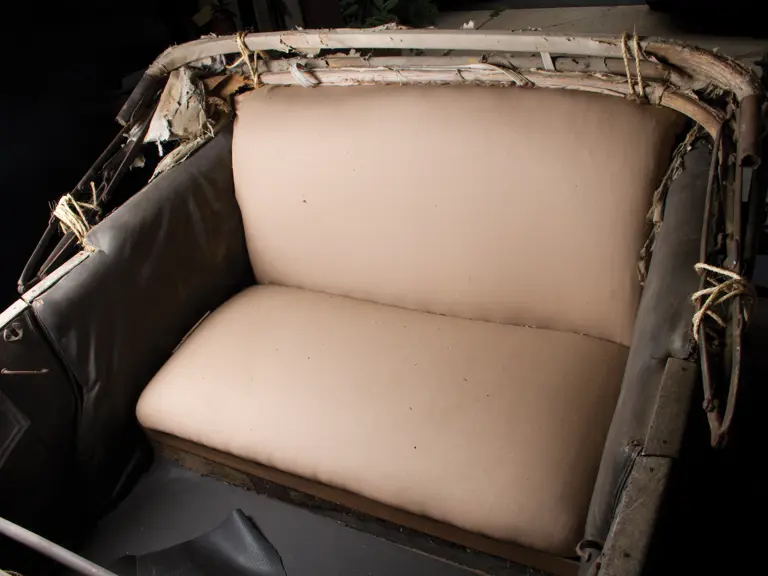

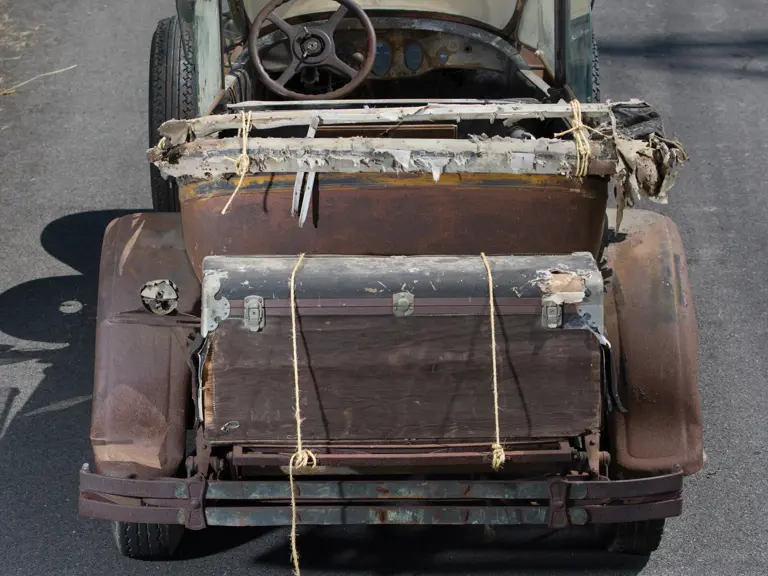
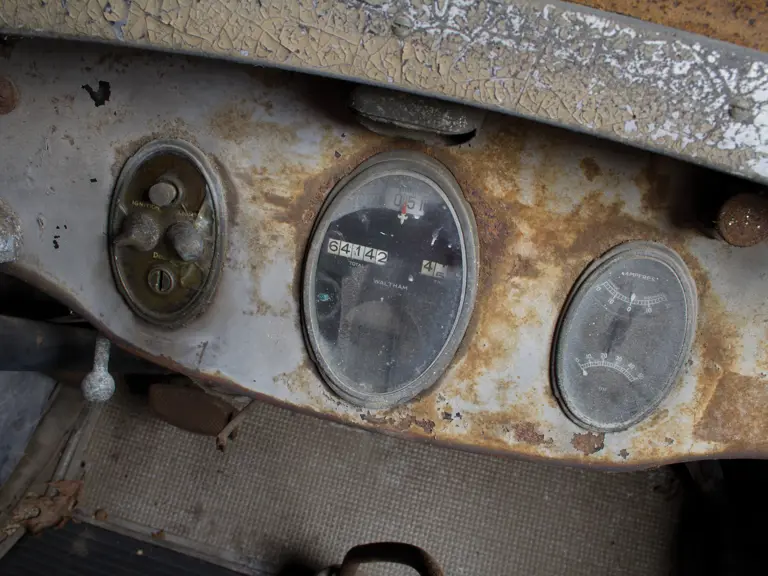
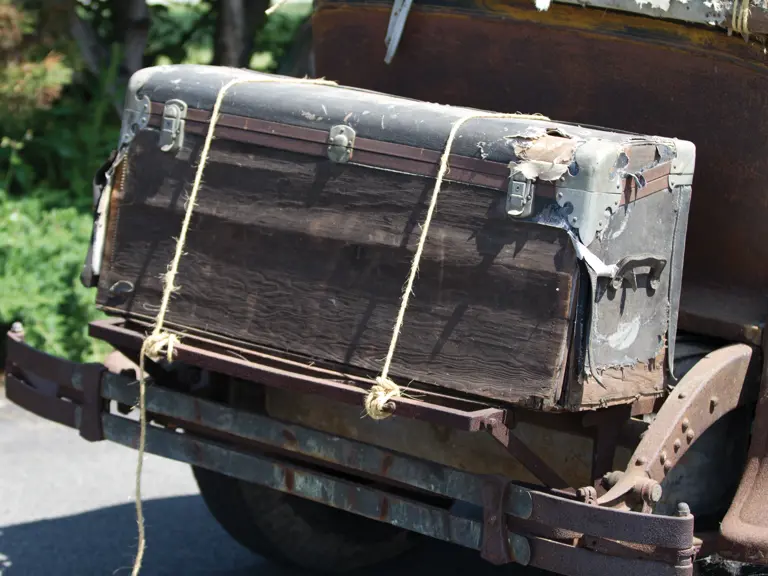

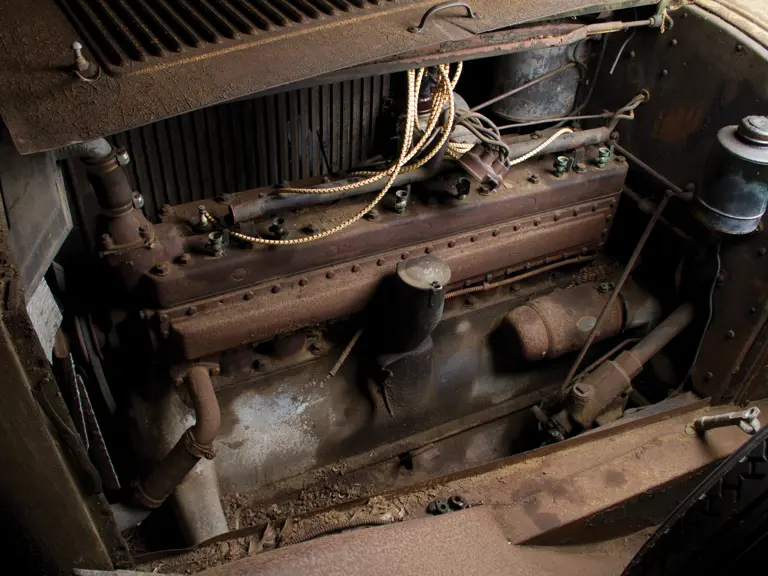
 | Hershey, Pennsylvania
| Hershey, Pennsylvania
